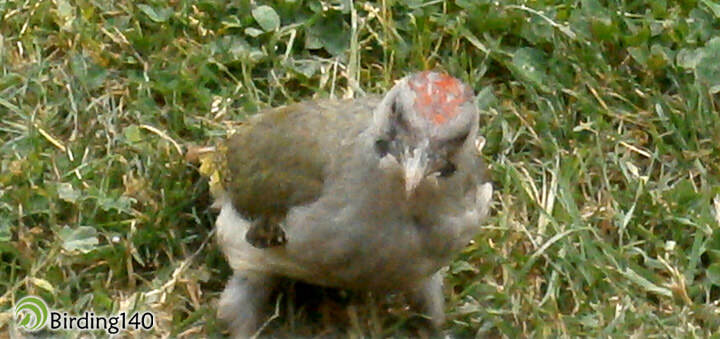When we enter a riverside forest or an urban park with a riverside walk, we usually hear a distant patter. After that, a green shadow climbs upon a tree trunk and disappears among the branches.
Most of the time it is a European Green Woodpecker, a more astonishing animal than what could be thought at first. The European Green Woodpecker makes this patter to communicate with specimens of the same species or to attract females during the mating season. Another characteristic is that the European Green Woodpecker warns of approaching storms with its laughter-like song. Besides, it is able to swallow up to 2000 ants in a single day. For this reason it can be seen on the floor while searching for insect nests. The breeding season takes place between April and June, so we should take greater precaution while birdwatching on those dates.
The European Green Woodpecker usually lives in Pyrenean oak trees and riverside forests. Its favourite trees to carve a nest are the quaking aspen, the beech and the oaks, which have rather soft wood. However, we wonder how it manages not to harm its head when carving the tree to make a nest. The entrance of the nest has a diameter of 5-6 cm, and the internal cavity, of 10 to 15 cm. Apparently, every time it hits a tree the head movement is stopped. At that moment, the head withstands a force which is equal to 1000 times the force of gravity. During this process, the neck muscles hold the brain in perfect timing with the hammering. This is the only way of absorbing the impact. Thanks to a spongy cartilage that absorbs every impact against the wood, the bird’s head doesn’t get smashed. Moreover, after each of these movements, a muscle separates the brain cavity from the beak, some kind of air-bag that saves the life of this woodpecker of less than 30 cm in length.
The hyoid bones above the skull help achieve this. These bones are found in a case full of liquid, which allows them to squeeze or separate rather easily, creating a new way of absorbing impacts. Although the mission of this structure is actually containing the long sticky tongue that usually exceeds the length of its owner. A last peculiarity is that in the tip of that tongue are the corpuscles of Herbst, nerve-endings through which the European Green Woodpecker can “hear” the insects inside the trunks of the trees.
There is no doubt this is the story of an astonishing bird, and of the secrets it uses that allow us to keep hearing its pattering in our forests and parks.
If you have enjoyed this post please share it on your social networks.












